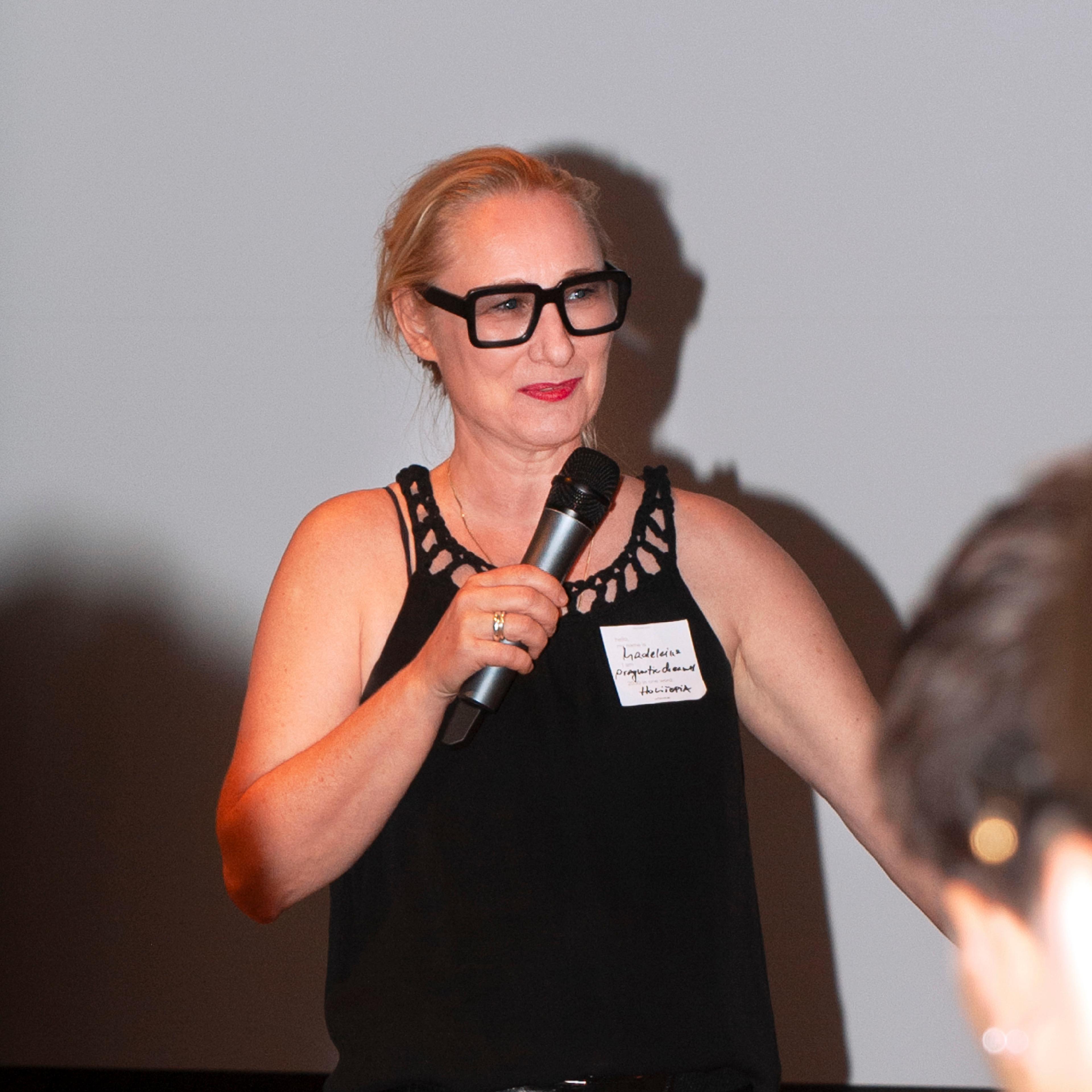Lecture
Creative Intelligence in Epochal Shifts
The Art of Future Design
September 7, 2023

HOLITOPIA 2023, Chapter I. What Can Art Do For Us? Madeleine Schwinge September 7, 2023 re:future lab / Spreehalle, Berlin
Founder of re:future lab, Madeleine Schwinge, urges us to install a new alliance between art (image), design (form) and architecture (space), forming a united frame to dialog with humanities, natural sciences, and technology.
Her stance is to go beyond disciplines and disseminate a holistic model of Creative Intelligence, conveying fundamental drivers of radical change: serendipity, symbiosis, interplay, fiction, flux. While bringing together post-disciplinary practice, experimentation, process and the tearing up of verticals, HOLITOPIA stands as a space of interconnection, co-creation and flux.
We live in extraordinary times, a time of epochal shifts, of paradigm shifts.
Change is inevitable—it is already happening and accelerating everywhere.
In almost all areas of our lives, old patterns and structures are dislocating, breaking down. We are the witnesses of the unfolding effects of unprecedented innovations, namely biotechnologies, big data and IoT, Artificial Intelligence, robotics, and hybridization.
What we see here, is perhaps one of the most famous photos of the 20th century. This iconic image was taken by Bill Anders on Christmas Eve of 1968 aboard Apollo 8 and shows the Earth peeking out from behind the lunar surface as the first ever crewed spacecraft orbits the moon.
Already 50 years before, there were numerous alerts from scientists and great thinkers. The inevitable reference here is the report of the Club of Rome, in 1972.
The Limits to Growth. Report of the Club of Rome on the State of Humanity is a study on the future of the world economy published in 1972 and produced by the MIT—Massachusetts Institute of Technology. The message still holds today: the Earth's resources-the global system of nature in which we live-probably cannot support present rates of economic and population growth much beyond the year 2100, even with advanced technology.
Then, where do we go from now?
Watch the video of the opening keynote
Speaker. Madeleine Schwinge
Front photo. © Jonathan Joosten
Location. re:future lab / Spreehalle, Berlin (Germany)
In-presence